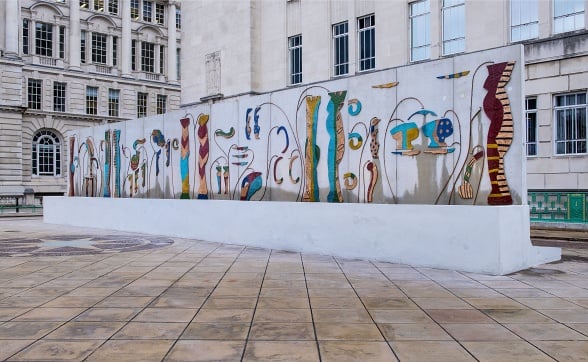
Betty Woodman, Liverpool Fountain, 2016. Photo Credit: Joel Chester Filde.
The disused ABC Cinema on Lime Street was dimly lit and there was an eerie feeling about the place as a group of about twenty of people, including myself, gathered inside.
This was the meeting place for the Public Spaces Tour associated with Liverpool Biennial, the annual Festival of Contemporary Arts running at venues throughout the city between the 9th July and 16th October 2016.
Our guide was Sevie Tsampalla, an Assistant Curator at the Liverpool Biennial, and before we began the tour, she invited everyone to take a look around the installations in the auditorium of the old Art Deco cinema.
There were video screens showing various images, sculptures emerging out of the darkness and a man’s voice filled the air, then the lights went out and a film started on the main screen.
At this point Sevie gathered the crowd in the foyer and gave them a detailed description of the exhibition, explaining to them that the Biennial consisted of a series of six episodes, Ancient Greece, Chinatown, Children’s Episode, Software, Monuments from the Future and Flashback.
Then over the next fifteen minutes, she discussed the many artists whose work was displayed at the ABC and described how they came up with the concepts for their artwork before answering any questions that arose.
Once she had finished, it was then out of the darkness and into the blinding afternoon light. The group were chaperoned through the crowded city centre streets towards their next destination, Liverpool One, where a large intricate sculpture called To-day 9th of July 2016 by Mariana Castillo Deball stood.
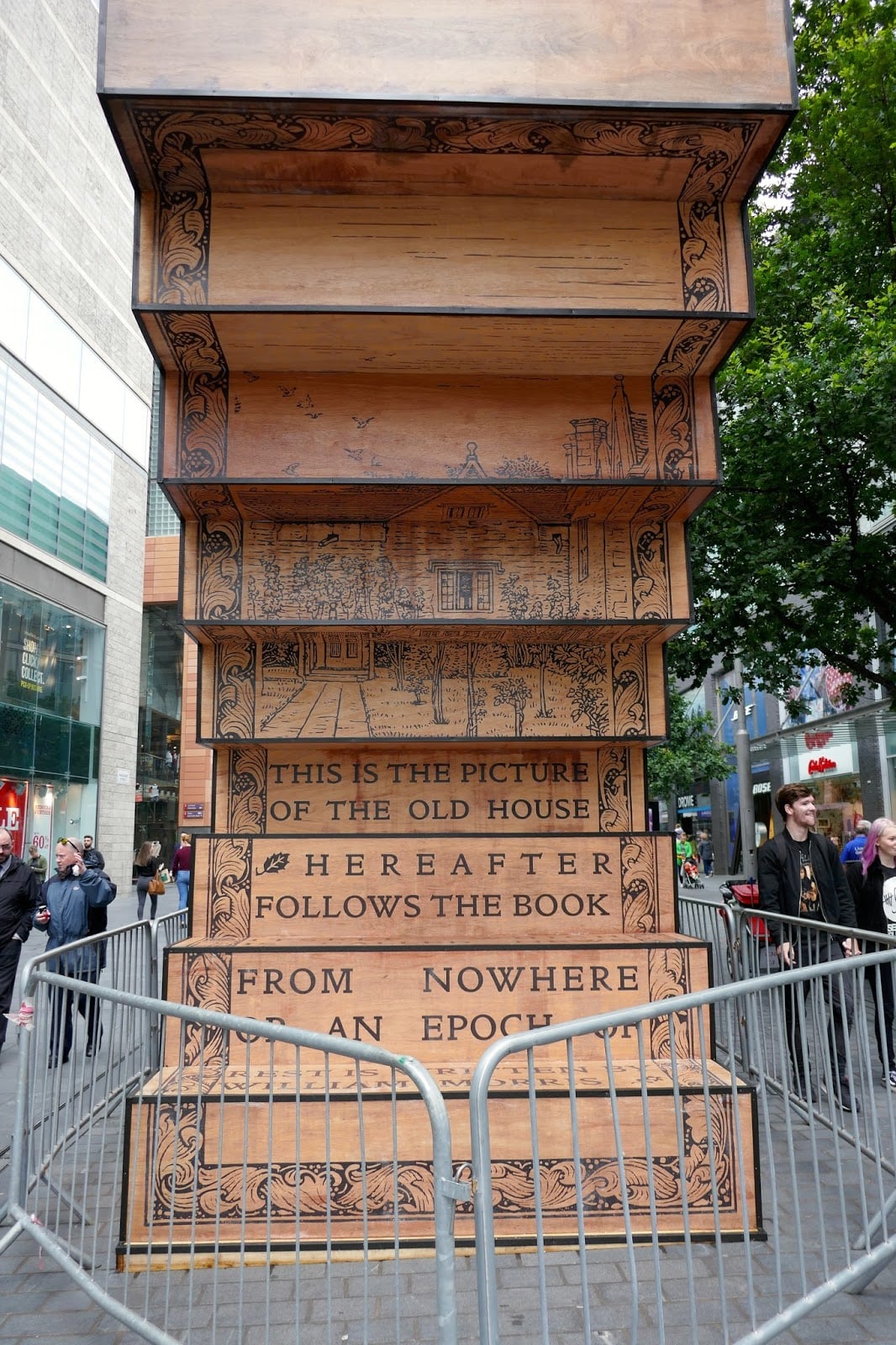
Mariana Castillo Deball, To-day 9th of July, 2016. Photo Credit: DiabolikDanger.
It was part of the Monuments of the Future episode and was built in the form of an infinite staircase. The date that was used in the title of the piece was the day that this year’s Biennial started and the guide explained that the idea behind it was that someone could jump across the same date over different years. There was a newspaper that accompanied the artwork which highlighted events that took place on the 9th July across time and this was handed out amongst the group.
Then it was on to the next public space in Derby Square, just outside Liverpool Crown Court where Lawrence Abu Hamdan’s Hummingbird Clock was situated.
It was a project based on a government surveillance system that has been in operation for the last ten years, which utilises the humming sound generated by the electric grid. Almost all the recordings that are made within earshot of this can be forensically examined to see what the time and date was and whether they have been amended.
The artist had created a similar installation for the public to use consisting of three CCTV cameras at different heights, which focused on the Town Hall clock. It looked quite complicated, but was fascinating and incredibly imaginative.
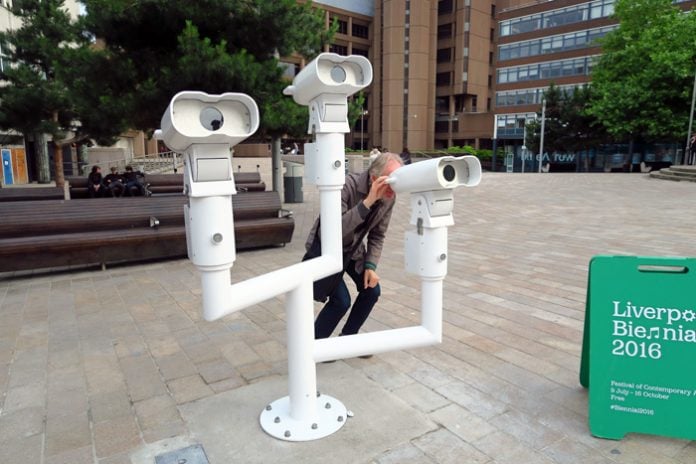
Lawrence Abu Hamdan, Hummingbird Clock, 2016. Photo Credit: artinliverpool.
On leaving Derby Square, it was on to the final destination of the tour: George’s Dock Ventilation Tower by Mann Island, where Betty Woodman’s sculpture, Liverpool Fountain, stood.
Made out of bronze and ornately decorated, this artwork combined a mixture of Greek and Etruscan sculpture, Minoan and Egyptian art, Italian Baroque architecture and the paintings of Bonnard, Picasso, and Matisse.
At each place, Sevie explained in great detail about the sculptures that were displayed in a simple and informative way. This gave even the least knowledgeable person on the subject of contemporary art a valuable insight into them.
She also answered any questions that were asked with relative ease and at the end of this very intriguing tour, invited everyone to go and look at the other exhibits if they had the time to do so. The crowd then disbursed, but a few people stayed a little longer to find out more about the festival and converse with the well-informed guide.
The artworks selected for this event gave just a taster of what was on offer at the Liverpool Biennial this year and there are still a lot of other places left to see.
The Liverpool Biennial are still running a number of FREE tours until the 16th October.

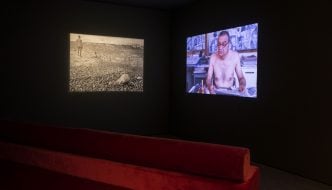
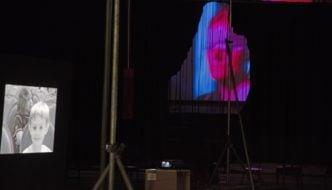
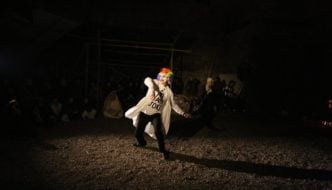
Comments